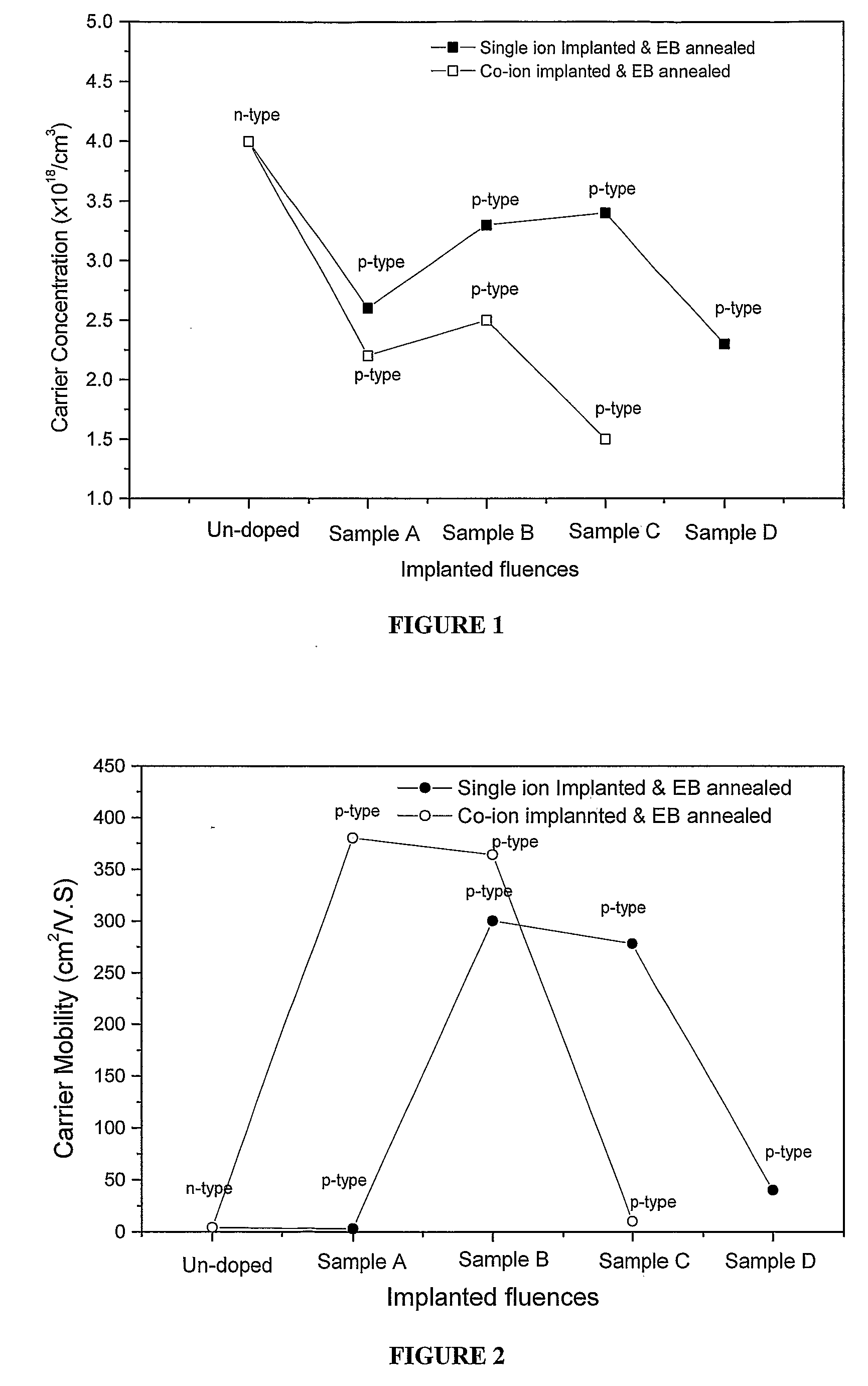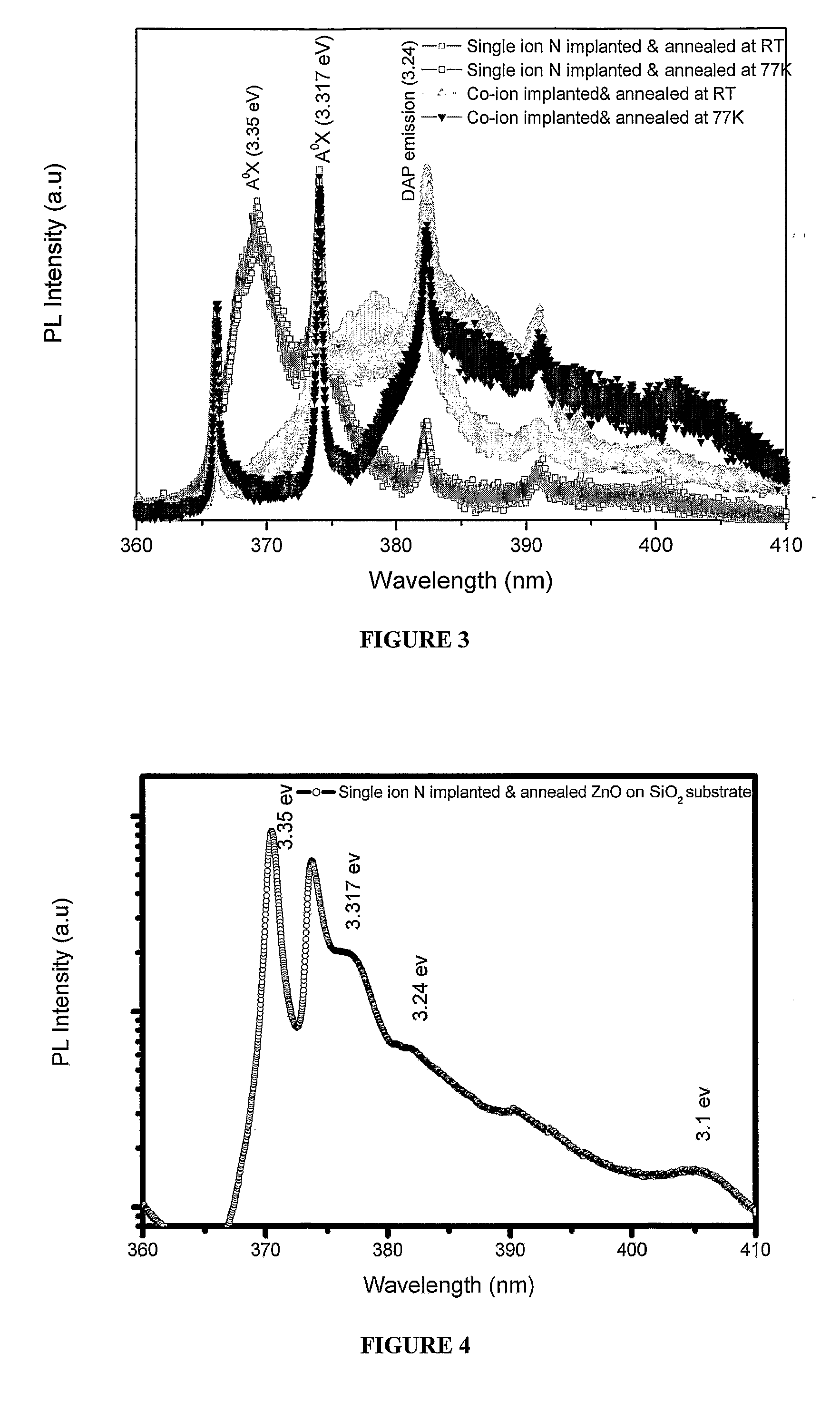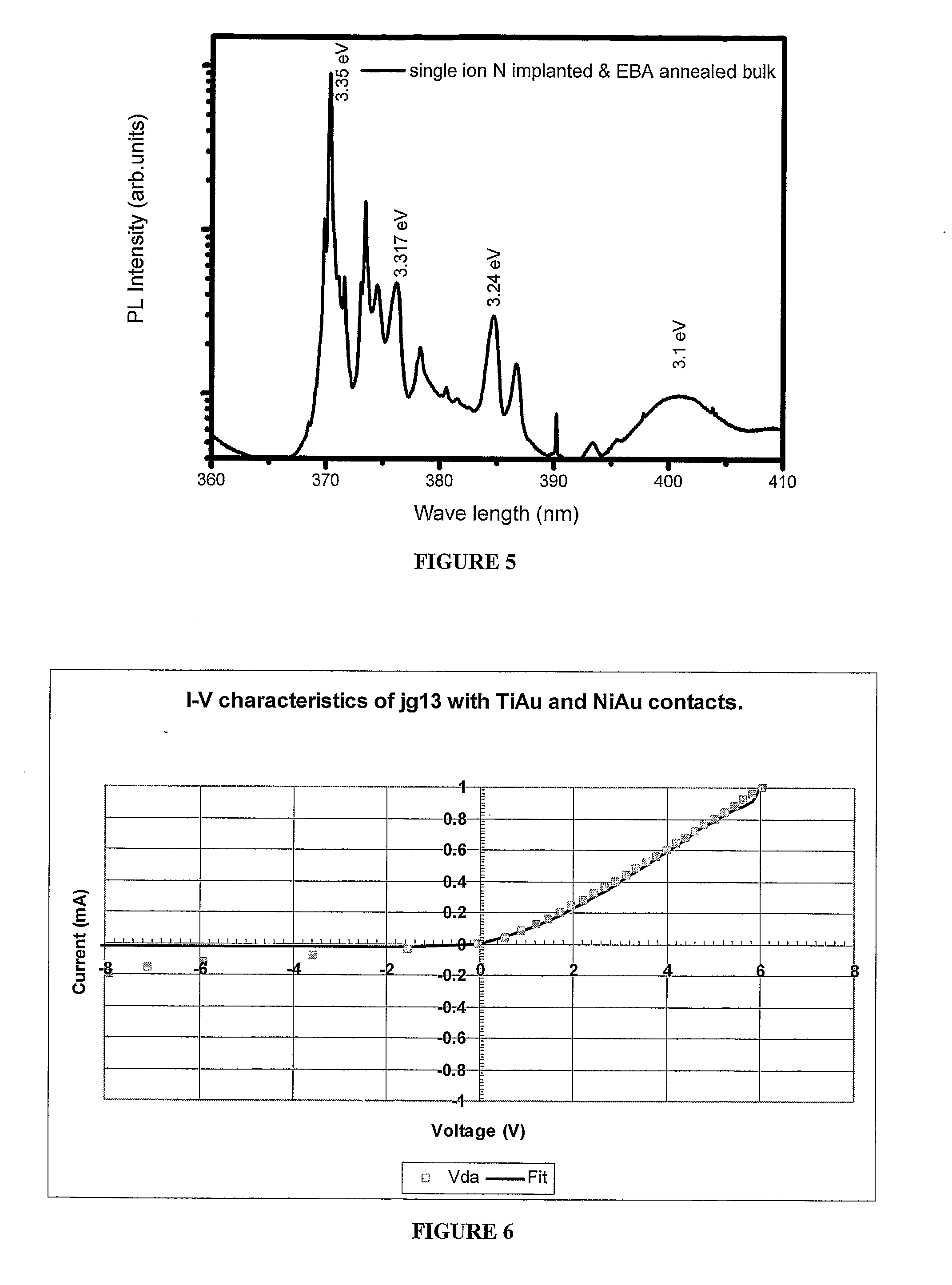Zinc Oxide Materials and Methods for Their Preparation
a technology of zinc oxide and semiconductor materials, applied in the direction of zinc oxide/hydroxide, semiconductor/solid-state device manufacturing, electrical apparatus, etc., can solve the problems of difficult zno optoelectronic applications, reported studies were unsuccessful at producing p-type zno, etc., and achieve the effect of decreasing the temperature of the substra
- Summary
- Abstract
- Description
- Claims
- Application Information
AI Technical Summary
Benefits of technology
Problems solved by technology
Method used
Image
Examples
example 1
ZnO Film on Si Substrate
Single Ion Doping Protocol
[0139]We took a 1×1 cm Si(100) substrate, mechanically cleaned it by spraying pressured air on to the surface and deposited a n-type ZnO thin film of around 300 nm. The targets were loaded into a high vacuum implantation chamber. 23 keV nitrogen ions (the acceptor) were implanted in an area of around 1 cm2 with various fluences starting from 1×1015 ions / cm2 to 5×1016 ions / cm2. The implantation depth was around 80 nm. The sample coded A corresponds to an implantation fluence of 1×1015 ions / cm2, which equates to around 0.2 atomic percent of N. The sample coded B corresponds to 2×1015 ions / cm2, which equates to around 0.4 atomic percent of N. The sample C corresponds to 2.5×1016 ions / cm2, which equates to around 5 atomic percent of N. The sample D corresponds to 5×1016 ions / cm2, which equates to around 10 atomic percent of N. After the implantation, the targets were annealed with a raster scanned electron beam at 800° C. for 15 minutes ...
example 2
ZnO film on SiO2 Substrate
[0151]We took a 1×1 cm 500 nm thick silicon dioxide (SiO2, 100) on Si substrate, mechanically cleaned it by spraying pressured air on to the surface and deposited a n-type ZnO thin film of around 300 nm. The targets were loaded into a high vacuum implantation chamber. 23 keV nitrogen ions (the acceptor) were implanted in an area of around 1 cm2 with various fluences starting from 1×1015 ions / cm2 to 5×1016 ions / cm2. The implantation depth was around 80 nm. After the implantation, the targets were annealed with a raster scanned electron beam at 800° C. for 15 minutes with a temperature gradient of 5° C. / s.
[0152]The electrical properties of ZnO films deposited on SiO2, after implanting of the acceptor ion (nitrogen) and annealing, showed p-type carrier concentration values of 2×1017 to 4.0×1018 cm−3, hole mobilities of 1-100 cm2·Vs−1 and resistivities of 0.1-10 ohm·cm.
Photoluminescence (PL) Spectra
[0153]The optical properties of the ZnO films deposited on SiO2...
example 3
Bulk ZnO
[0154]We took a 1×1 cm bulk n-type ZnO single crystal obtained from a commercial supplier. The targets were loaded into a high vacuum implantation chamber. 23 keV nitrogen ions (the acceptor) were implanted in an area of around 1 cm2 with various fluences starting from 1×1015 ions / cm2 to 5×1016 ions / cm2. The implantation depth was around 80 nm. After the implantation, the targets were annealed with the raster scanned electron beam at 800° C. for 15 minutes with a temperature gradient of 5° C. / s.
[0155]The electrical properties of the ZnO single crystal, after implantation of the acceptor ion (nitrogen) and annealing, showed p-type carrier concentration values of 1×1013 to 1.0×1018 cm−3, hole mobilities of 1-300 cm2·Vs−1 and resistivities of 0.01-100 ohm·cm. These properties are estimated from the properties determined for the ZnO thin films. Those persons skilled in the art will appreciate that some of the techniques used to characterise the thin films are not suitable for ch...
PUM
 Login to View More
Login to View More Abstract
Description
Claims
Application Information
 Login to View More
Login to View More - R&D
- Intellectual Property
- Life Sciences
- Materials
- Tech Scout
- Unparalleled Data Quality
- Higher Quality Content
- 60% Fewer Hallucinations
Browse by: Latest US Patents, China's latest patents, Technical Efficacy Thesaurus, Application Domain, Technology Topic, Popular Technical Reports.
© 2025 PatSnap. All rights reserved.Legal|Privacy policy|Modern Slavery Act Transparency Statement|Sitemap|About US| Contact US: help@patsnap.com



